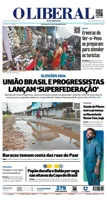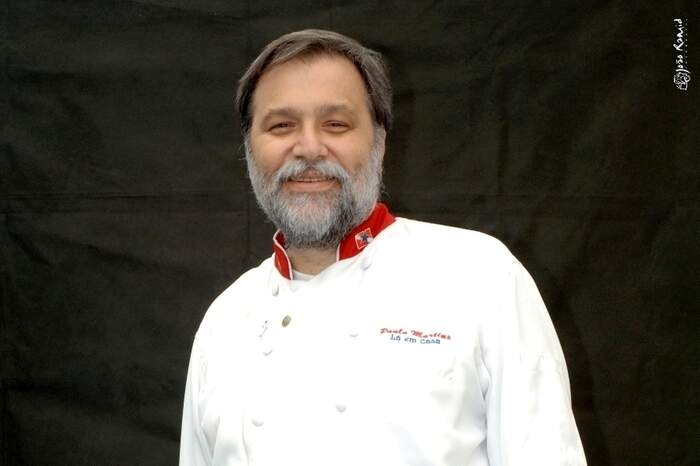Wealth of ingredients gives a special touch to the export of Amazonian cuisine around the world
Tucupi, açaí, jambu and flour are some of the striking elements of Amazonian flavors
Tucupi, açaí, jambu, cupuaçu, flour, tapioca, herbs and various spices... An endless wealth of typical and unique flavors and ingredients. In addition to the natural beauties, the Amazon region is now increasingly recognized worldwide for being home to a rich cuisine, which features a quite different taste from anything that can be found in the rest of the planet. Renowned chefs around the world are already enjoying the best of the Amazon in their gastronomic creations.
Listen to the comment on this news:
But the successful story of the flavors of the forest is long and, at a certain moment, it counted on some decisive steps to reach new horizons and visibility.
In 1926, sociologist Gilberto Freyre, renowned author of "The Masters and the Slaves", already mentioned in his "Regionalist Manifesto" the chestnuts, soups, and açaí in the "rich variety of delicacies" in the extreme north of the country. Remarkable Brazilian interpreter, for him, the food and the way of cooking it said a lot about the Brazilian identity and the formation of the national society.
In his flavored description of these delicacies, in a liplicking tone, Freyre already defended that they should be added, "with their own colors, to the map that would organize the variations of table, dessert and tray" of Brazil.
"The truth is that man lives not only by its spirit: it also lives by bread. Not only with the problems of the fine arts, urbanism, architecture, hygiene, engineering, administration, the regionalist must be concerned: also with the problems of cooking, of food, of nutrition," Freyre argued. "There are foods that are not the same as those bought on trays that are made at home. Fried fish, for example, is only fun made on trays. Wet tapioca, served on the street on a banana leaf is the most delicious one", delighted the sociologist himself in his manifesto.
Another type of manifesto, released decades later, only after the turn of the century, opened a gateway for the universe Amazon cuisine to gain strength and contemporary nuances. In 2000, a chef and architect from Pará was the mentor of a decisive meeting: Paulo Martins was the one who brought the first six internationally renowned Brazilian chefs to Pará, to present what the region could offer the world. Among other tourist spaces in the city of Belém, Celso Freire (PR), César Santos (PE), Emmanuel Bassoleil (SP), Sérgio Arno (SP), Teresa Corção (RJ) and Danio Braga (RJ) visited the Ver- o-Peso, the largest open market in Latin America.
Proud of his origins, Paulo Martins won the title of great ambassador of Pará's cuisine, which was born precisely from the desire to share the unique flavors of the Amazon with the whole world. Brazilian chef Alex Atala recalls moments when he and Paulo Martins lived together, exchanged experiences and literally globalized the cuisine of Pará.
"You can not not use superlative words to talk about these ingredients and I also add coriander, chicory, among other products that are fascinating" - Chef Alex Atala.
"At that time, we didn't find these supplies easily, and I didn't know anyone. That's when I had the idea of calling Paulo, even though I never had contact. He was very attentive, but I felt like a fool, because I thought he wouldn't send what I needed. But to my surprise, in four days, several coolers arrived with everything I needed. From there, we created a very good bond, and I always saw him as a master ", highlights Atala.
“Tucupi, the spice of the 21st century”
Chef Paulo Martins has stated countless times that tucupi would be the “spice of the 21st century”. On September 9 of 2010, Paulo left towards immortality, but left a gigantic legacy for Pará and the world. “The date was sad for me for a long time”, says the youngest daughter, Joanna Martins, who celebrates her birthday precisely on the day of her father's death. “But I kind of understood the special mark he wanted to leave”, says the businesswoman who, following in Paulo's steps, is also dedicated to presenting the flavors of Pará to the rest of the world. And it has been gaining recognition.
In September of this year, the tucupi produced by Pará's startup Manioca received the Sirha Innovation Awards 2021, an honor in recognition of Sirha Lyon's food innovation, one of the most important haute cuisine events in the world. The award given in France – a country recognized for its high-quality gastronomic culture – is a world reference in food service and hotels, considered one of the most important in the world for the segment.
Tucupi is an ancestral Amazonian spice, of indigenous origin, made from the fermentation of the juice extracted from wild yellow cassava (known as mandioca in the region), seasoned with chicory from Pará, basil, garlic and salt. It has a unique flavor and is one of the most emblematic ingredients in Amazonian cuisine, as it can be used as a spice in practically all recipes. Traditionally, it is used in the preparation of several typical dishes from the Amazon, such as duck with tucupi (roasted duck meat, served with jambu leaves, another local herb) or tacacá, which also contains starch, jambu and shrimp. Joanna Martins' project, started in 2014, seeks to “connect people to the Amazon, through creative, practical and natural foods made from three principles: working with local ingredients, creating 100% natural products and promoting fair trade with producers, communities and cookers, who are the basis of Pará cuisine”, highlights Joanna.
Architect of flavors inspired a new moment in gastronomy
Alex Atala says that it is not possible to talk about Brazilian food without talking about Paulo Martins and Ana (Paulo's mother). "I say that nowadays it is only possible for us to find typical ingredients from the Amazon throughout Brazil and the world thanks to this family, as they have always been promoters of ingredients from the Amazon".
Fascinated by tucupi and enchanted by jambu, the chef from São Paulo guarantees that the ingredients are the wonder of Brazil. "You can not not use superlative words to talk about these ingredients and I also add coriander, chicory, among other products that are fascinating", he adds.
Even knowing all the wealth present here, Atala points out that Pará's cuisine still does not have the prestige it deserves in the world. But to reach that level, he says, is just a matter of time.
To do so, the Amazon cuisine has several "ambassadors". One of them, from the new generation among the names that stand out on the national scene, is Thiago Castanho, who grew up watching his parents cooking and trailed his own way, researching and innovating with Amazonian flavors alongside his brother, Felipe Castanho. He is always invited to participate in television shows, runs webseries on his social networks in order to promote the local cuisine, and is one of the references on the subject.
Another name growing in visibility, due to the quality of the dishes and entrepreneurial spirit, is Saulo Jennings, better known simply as “Saulo, from Casa do Saulo”. The restaurant was born in Santarém, but now has two branches in Belém - and soon it will also be in Belterra and will cross borders, reaching Brasília, the federal capital.
For chef Saulo, the custom of cooking came later. Although he was influenced by his father, who has passed away, he only had the idea of creating a restaurant with his own dishes years later.
“In life you have to have some gift. You either sing, or play an instrument, or cook. And I wasn't very good at any of that. Once my father setted up everything in the kitchen for us to finish the dish, but my brother and I messed up. He encouraged us in such a way and that stuck with me. When he would go to the kitchen it was a time for celebration, sharing, joy. He turned the love for food into the love for people. For him it was a great event”, says Saulo. “He would finish cooking and play the guitar from a distance, watching people eat what he had made. I told him to open a restaurant, but he never wanted to, and the idea stayed with me”.
The family lived in Santarém, but the son already had his own apartment. With an undergraduate degree in administration and law, with a graduation degree in sales and marketing and people management, Saulo decided to leave everything to live in Alter do Chão. And, even without knowing what he was going to do professionally, he sold the apartment and went to live with his mother until his house was ready. He moved out even before the work on the house was completed, and there he started giving kitesurfing lessons and giving lectures and consulting in his graduation area. At the end of each of these meetings, Saulo would serve a sort of coffee break made by him, and people ended up enjoying the food more than the classes.
After the insistence of friends who recognized Saulo's work in the kitchen, he decided to set up a simple space. He bought a stove and wore a fanny pack around his waist to collect payment for food, alone, in an as-yet-unnamed restaurant. During the winter, customers were rare and he says that he even thought about giving up, but when summer came, sales improved.
The challenges kept coming: with all the money in cash to pay suppliers and buy raw materials, the chef was robbed. “They beat me, tied me up, tore my clothes, threw me in a mud where I was drowning, I had to suck the air in. I said to myself: it's over, I don't want it anymore. But I had an appointment the other day, with no money to buy material. I found a friend, explained the situation, he had R$100 in his wallet and lent it to me. I went to the market, bought spices, but the fish and drink were on the cuff. It took me a while to believe that I could reverse this situation”, he recalls.
The restaurant began to fill up at the beginning of the second year of business, known as “Casa do Saulo” (Saulo's House), and has never been empty. In 2014, the completely original menu was created, made by the chef, which remais the same today and resulted in the title of best restaurant in the North and the fifth best in Brazil, in 2018, which was also repeated in 2019.
The two standouts, according to the owner, are the dish that carries the company's name, “Casa do Saulo”, made with grilled pirarucu, cream of Brazil nuts, plantain and shrimp; and “Paraíso Verde” (Green Paradise), with fresh pirarucu medallions, wrapped with bacon and black tucupi molasses. Saulo also contributes to the region's development, generating employment and income, assisting needy families and offering free gastronomy classes for those interested.
Gastronomy that reinvents itself: the water lily pad at the table
In 2015, the capital of Pará, Belém, received the title of Creative City of Gastronomy, granted by the United Nations Educational, Scientific and Cultural Organization (Unesco). The city has, in fact, hundreds of restaurants and places where you can enjoy the best of Amazonian cuisine, for all budgets: from the sophisticated table and air-conditioned environment to the cozy warmth of the Ver-o-Peso market counters.
The strength of gastronomy is one of the keys that heat up tourism in various regions of the state, each with its own particularity. In Marajó, for example, it is the buffalo meat and cheese, with Brazil nuts, that stands out. In the south and southeast, roasted tucunaré fish, steamed or fried, is almost a registered trademark, as well as beef, which grows due to the increase in livestock activity.
Like that, the Amazon establishes itself as a destination that is a trend in Brazil and in the world, offering much more attractions than the landscapes and beaches – as if that weren't enough. The unique pleasures of local cuisine are high points. The strong one, of course, is the fish. But creativity and innovation gain space for the unusual – and for the different tastes.
In Alter do Chão, an island that is part of the municipality of Santarém and in a 30-minute drive from the metropolitan region, there are many options for tours that have gastronomy as the main dish (sorry fot the pun). Leaving the shore of the island by boat and following a journey that lasts about an hour, there is the so-called “Canal do Jari”. There, a resident uses her creativity to attract tourists.
The water lily, a typical Amazon plant that is part of several stories and legends in the region, gave life to an original and innovative menu developed by Dulce Oliveira, 49 years old. Born in Capitão Poço, she moved to Santarém in 1996 and to Canal do Jari in 2014 with her husband. In a more isolated place, Dulce looked for something to do. As she already thought the water lilies were beautiful, she decided to cultivate a “garden” full of the species, and what was for contemplation only became a business.
When the demand for tourism began for the family, there was still no menu. People went to see the garden of plants that floated on the water. During the planting stages of the water lily pad, Dulce observed that the animals ate the plant, and started to taste parts of it and to develop food. “I started writing down what they ate, which parts and the moments of the day. When I started to eat too, I saw that it was not harmful”, recalls Dulce.
The first dish she developed was vinaigrette. Initially, Dulce put the water lily in a common recipe, and then she removed the ingredients until she had the vinaigrette completely made from the plant. Bread was the second item on the menu. After three years of testing, between 2014 and 2017, today the menu also features brownie, tempura, quiche, popcorn, jam, liqueur, salad, spaghetti, moqueca and others, totaling about 20 dishes. Generally, most of these items are served on a degustation menu for customers.
“It's possible to use the flowers, petals, stem and seeds, but as I grow the plant, I don't use some parts. If I use the petals I don't have the seed, because while the flower is there, the seed is green, if I use it I won't have the popcorn, for example. So I let it complete its development and, when it loses its edges and starts to decompose, I remove the leaves and use the stems”, explains Dulce.
She says that the tours to get to know the garden gradually changed. As customers began posting on social media, people became more interested in the food than the garden.
For tourism in the region, Dulce believes that her work is important, mainly because it disseminates the culture of local communities. “If I had a good internet here, I would definitely invest more in social media. Even today, the visitors who come here are the ones who promote the work. I serve an organic food experience grown in water and the recipes developed by me”.
Delizias from Italy with a regional touch
Also a standout in the local cuisine of Santarém, 38-year-old Fátima Viana owns a restaurant called “Do Italiano” (By The Italian) in Alter do Chão, which mixes elements of Amazonian and Italian culture. From a humble family, she was born in a nearby river community, but grew up in the city to study. As there were no opportunities and her family did not have financial conditions, her mother sent the daughters to live in other houses, where they studied and worked in exchange for a roof, clothing and food.
The passion for gastronomy came from an early age, because Fátima's mother was the best “boleira” (cake specialist) in the community and saw in the kitchen a way to earn income. The young woman only returned to the family's house years later, where she met the Italian Alberto, a foreigner who was on vacation in Brazil and would later become the father of her three children.
“I met him in a year, in my community. He went there with my sister and I had a little baby who is my oldest child. A year later, I was at the Our Lady of Conceição kirmess, and it was the first time I went on the walk, and I remember asking for many things. I was sad because it was a lot of work to have a small child. And then 15 days later I met Alberto again and that same year he invited me to go to Italy”, she recalls.
The couple traveled when Fátima was just 20 years old and spent four full years abroad. She says that the cultural shock was great: the language, the climate and, above all, the lack of gastronomy from Pará. When they returned to Brazil, Fátima and Alberto decided to set up a restaurant to sell fish, but “Do Italiano”, as it is known today, only came into existence years later.
“Meeting his mother was a very important event to me, very strong, very caring and affectionate. And she cooked very well. Having lunch with my mother-in-law was a party. I've always loved the smell of her house, full of roses, that's why I keep roses in my space today. Looks like she's here with me somehow. After we returned to Brazil, she came for a vacation and visited the restaurant. Had lunch everywhere. One day, she said to me: ‘My daughter, you are no different from anyone else. What makes you have a restaurant? What did you learn in Italy? What do you really want?'. It moved me. In the same year, a person came to the restaurant and said he was hungry but didn't want to eat fish, and I was testing a pasta and I offered it to her on a thursday. By sunday, there were people asking for the pasta”, says Fátima.
The dish, which is now the restaurant's standout, is made with shrimp, jambu and black truffles, which the chef brought from Italy when she returned to Brazil. After the success of the first dish signed by Fátima, she returned to Italy to take a course in gastronomy, but she only took over the restaurant four years ago. Today, she takes care of the headquarters, in Alter do Chão, and her partner, Alberto, is in Santarém, where the chef also signs a 100% authorial menu.
“I wanted to be different, with a cozy space where I could feel at home. It's like that today. Here is my home. That's why there are flowers every day, as if I had the cozy scent of my home in Italy. Every time I go into that kitchen, I cook like I'm going to eat too. It's part of me, I love cooking, for me it's a party. And it has to be perfect. Sometimes I hide in the kitchen because I have to be there and do my best. I sought gastronomy as a survival and in the kitchen I was reborn from many things. I found myself".
Cosmopolitan gastronomy gains space in Alter
Although Alter do Chão is an island full of local Amazonian culture, there is also space for outsiders. This is the case of Maximiliano Pastoro, 47 years old, better known as Kike, the “Argentine”. He worked in advertising for many years in Buenos Aires, but his greatest passion is gastronomy – he has already had two restaurants, with partners, and was working in a kitchen located in Cumbuco, a city 40 kilometers from Fortaleza, Ceará, when a client suggested that he visit Pará.
“He knew I wanted to set up my own restaurant in Brazil and told me it was a good point, here in Alter do Chão. So I came to see it in 2016 and I fell in love”, says the Argentine. For three years, he prepared and created a strategy of what would be the business to be set up in the west of Pará. First, the idea was to open a steakhouse, but as the logistics and the enterprise would need to be much larger, Kike opted for pizza. The name of the restaurant is “Massa Madre”, but anyone who goes to Alter do Chão realizes that it has become popular with the name “O Argentino”.
What “amazes” the public the most, according to the chef, is the oven, which is exposed and is close to the tables. Also, the shape is different, all rounded, made from scratch. On the menu, the highlights are the bruschetta, made with homemade bread toasted in olive oil, filled with southern cheese – a mix of gorgonzola and philadelphia cheese – and topped with more olive oil, chives and Brazil nuts. This is an authorial recipe, as are all dishes served by Kike.
“I always mix what I already know how to make with local products. Here is a place further away from the tourist center of Alter, quieter, with pleasant music, low light, more intimate, reserved. I don't think about going back to Argentina. I'm in the Ecuador of my life”, celebrates the Argentine. The chef also guarantees that he intends to expand the business and create another restaurant, but he doesn't know if he will reconcile the two and continue with Massa Madre: “I want to do other things. I like to change, I don't spend a lot of time on the same things. I have to do what makes my heart beat. When he doesn't beat for something you do, we have to go with something else”, he advises.
COMPARTILHE ESSA NOTÍCIA







































